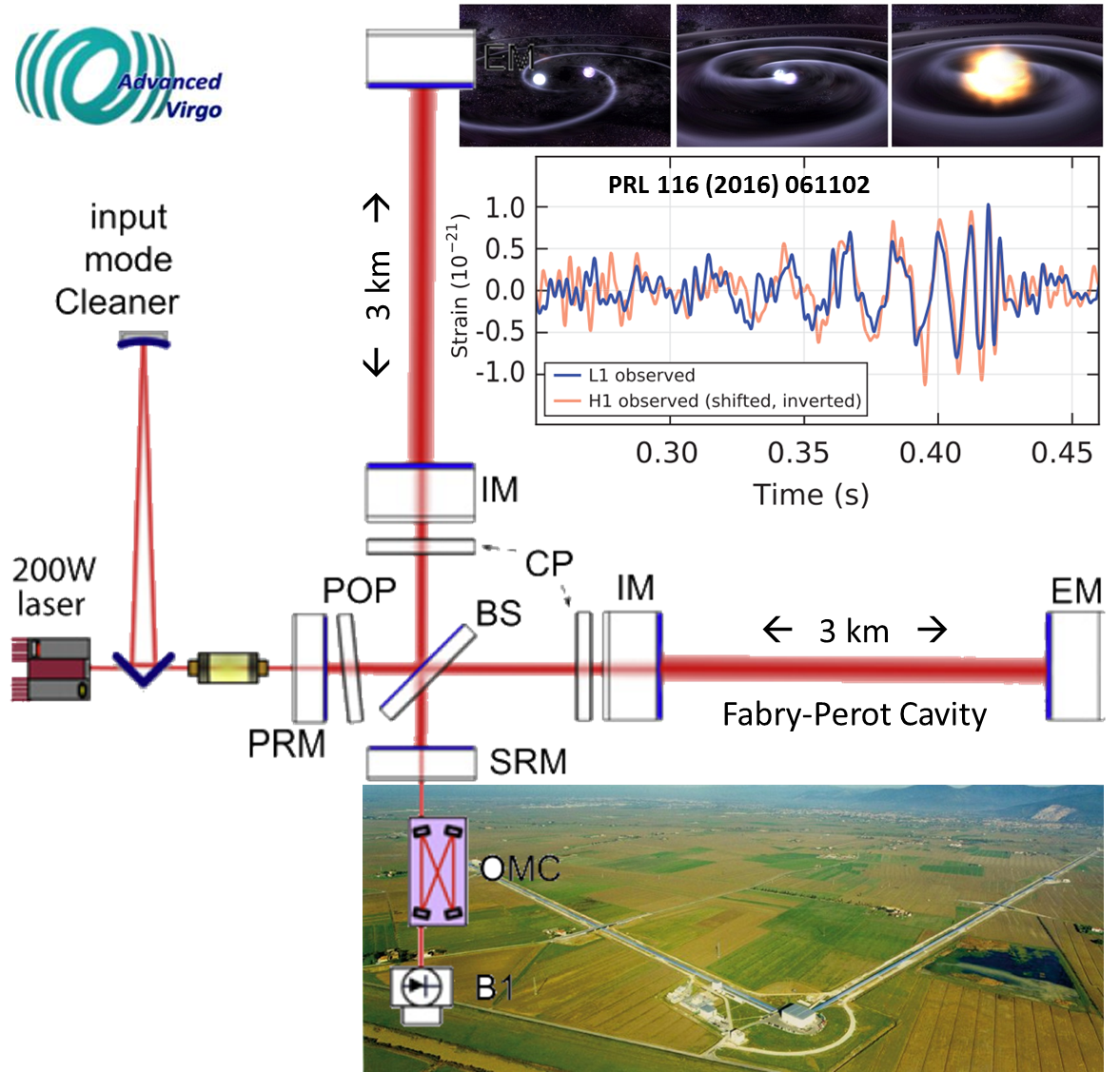Link between the structure of amorphous thin films and mechanical losses in order to optimize the detection of gravitational waves
Collaborators
Gianpietro Cagnoli , Professeur and leader of the thematicValérie Martinez , Maître de Conférence.- David Rodney, Professeur
- Christine Martinet, Ingénieure de Recherche CNRS
Research topic
One of the themes of the SOPRANO team concerns the mirrors of the European project VIRGO whose objective is to detect gravitational waves (GW). This work is carried out in close collaboration with the Laboratory of Advanced Materials (LMA) which is in charge of the synthesis of these mirrors. These are Bragg mirrors consisting of several amorphous thin films (alternately SiO 2 and Ta 2 O 5 doped with TiO 2) deposited by ion beam sputtering.
The major limiting factor for GW detection is the thermal noise, directly correlated with mechanical losses, generated in these films. It is therefore necessary to produce materials having very low mechanical losses. Fused silica is known to have losses 10^3 times lower at room temperature than silica synthesized by physical deposition. Nevertheless, at temperatures close to 50 Kelvins, the losses are of the same order of magnitude for these two materials. To date, the reason for this very low thermal noise at ambient temperature remains unclear. Indeed, even if we know that the origin of the mechanical losses is related to the mechanisms of structural relaxation, these mechanisms are to this day, unknown. Our study consists in detecting these relaxation mechanisms and determining their dynamics. We therefore seek to establish links between the structure of thin films and mechanical losses. Raman and Brillouin vibrational spectroscopies are used to study the structure of these thin films. With regard to the deposited silica, the spectroscopic signatures are characteristic of a denser silica than a fused silica. As for the mechanical losses, the first results showed that they are correlated with the proportion of the cycles with three tetrahedra.

















